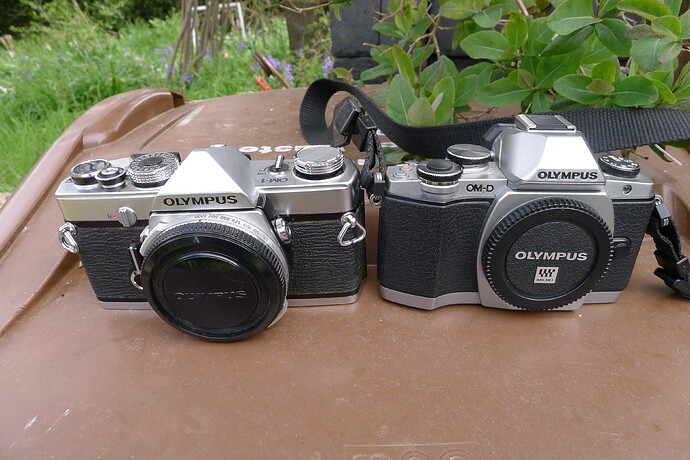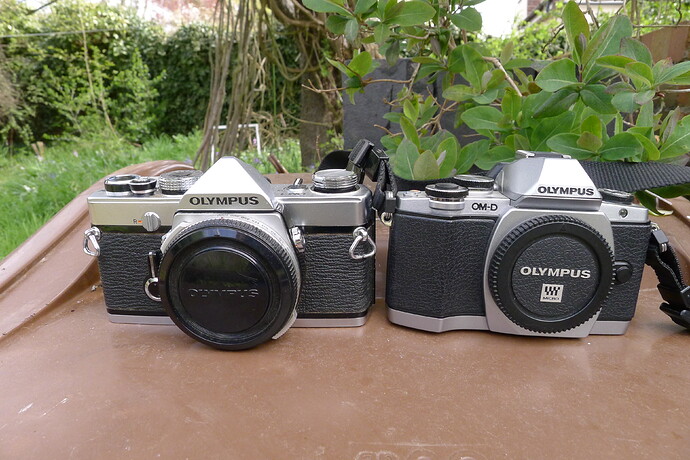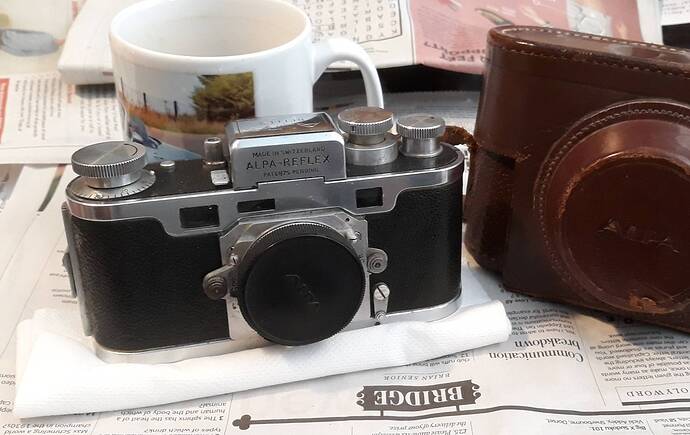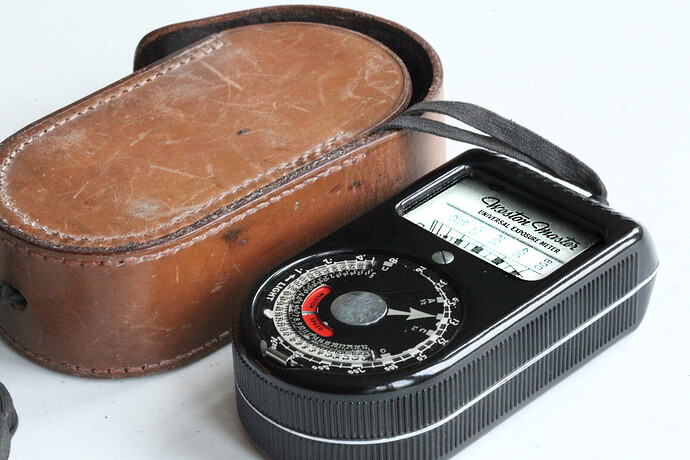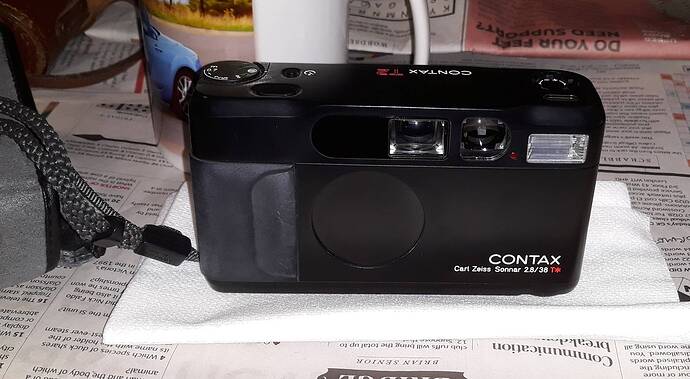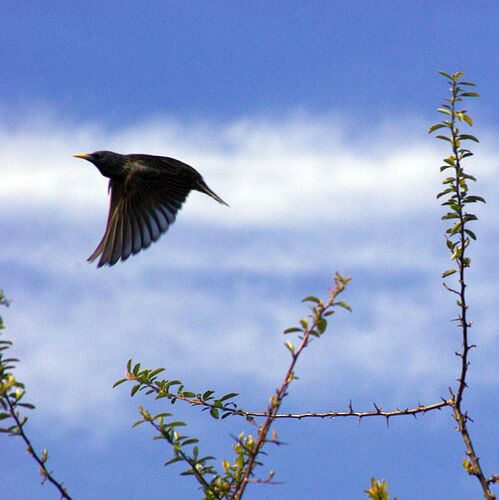I bought a DSLR in 2004 to replace my film SLR’s and was disappointed with the quality of image compared to the film camera. I replaced that with a digital compact with a screen, which after 40 years of holding a camera up to my eye I found it difficult to adapt to. In 2014 I switched to a micro 4/3 mirrorless camera which was the same size as my much loved OM cameras and everything (except the plethora of computer programmes etc.) felt “right” again.
Geejay - yes, you’re right. The viewfinder technology development was a big factor holding back ‘semi/pro’ mirrorless. However, that’s all changed. My Fuji viewfinder works well in low light. Like you I looked at Canon R as I had a 7D2, but for reasons of size I went for a Fuji XT3. I’m glad I did. Mind you I still have my old 450D and a couple of EF lenses until I add to my Fuji lenses. The Canon R has a new lens mount, so it needs new lenses or a EF/R adaptor.
JS
I still prefer my ten-year-old DSLR Pentax K5 with mirror because it does not have the problem of trying to see an LED image in bright sunshine. The original “weather-sealed” 18-55 kit lens is on its way out because of flare after being frozen and I’m using an ordinary spare from a K35 while hoping to find a replacement for the original
On a couple of very expensive mirror-less cameras belonging to friends I tried last year up an Austrian mountain just before Covid, my eye adaption times were significant going between sunlight normal and the maxed-out dim LED. My phone was even worse, being so dim it was simple point and hope, but with the one mirror DSLR in our group, no problem.
Modern viewfinders should be a lot better, but last year and my experience from decades ago with video cameras still puts me off, and this was even with professional quality broadcast cameras, there was always something not quite right, light levels, contrast range, resolution, info-clutter, reliability, calibration, the list goes on.
An optical mirror system either works or is broken. KISS.
Despite the changes in technology, which in most areas has led to a decrease in size of equipment, with cameras it seems to have gone full circle. At the end of the 60’s the leading models, Nikon F1n with photomic (?) head and the rival Canon F1 were about the size of a house-brick and weighed about as much. Then after the introduction of the Olympus OM1 the trend was for all manufacturers to make their products more compact and user friendly. With the digital camera replacing the film camera and many (mechanical) parts being made redundant it would have seemed that cameras would have remained fairly compact, but no, they tend to be getting larger and heavier (especially Nikon and Canon) with every new model.
I’m a bit confused here Richard. A modern mirrorless does, indeed, have a screen on the back, but the primary viewfinder is just like a DSLR. Sunshine isn’t an issue. It can’t be compared to using a phone or a basic compact digital camera with just a back screen. As for KISS on a mirror system then I reckon a greatly reduced component count and elimination of a mechanical system is exactly that. Given how far technology has moved on I suspect comparing experience on decades old kit may not be relevant.
JS
That is all down to bigger and better imaging sensors. And these are truly impressive, breathtakingly good!
A bigger sensor requires a bigger lens with a bigger space between it and the sensor (back focal length), and more glass weighs more and needs a stronger and more rigid camera body, one that does not flex or have any thermal movement in the sun.
Bigger faster sensor requires more powwerrr and thus a bigger heavier battery.
These are the other reasons I stuck with the old K5. With a 2/3 sensor it’s not oversize, the battery lasts forever (at least 500 shots without flash), and yet the optical steady (piezo moving the sensor) allows for hand-held night shots, or hand-held day with the 300mm.
Chilham castle taken 03/05/2014 from Catha’s Seat on one of the Sustrans routes, a good mile away. First the hand-held 300mm full image (shrunk pixel-wise for bandwidth)
and now a pixel to pixel mapped unshrunk detail of the leading in the windows.

This is ONLY a mere 2/3 format eleven-year-old mirrored DSLR. Modern ones are an order of magnitude better, and bigger, and heavier. But I don’t need that extra quality or bulk, or weight, this is good enough; so it is how I’m staying.
For me, alas, it is; simply because the eye-finder on each of the three mirror-less cameras I was shown by their proud owners is still a lot dimmer than the normal rest of the bright, sunny alpine day, and my old eyes were slow to adapt each time.
And as you say, the back panel was utterly useless.
The viewfinders have adjustable brightness…I’ve adjusted mines so it’s similar to what I’m looking at.
Well the Olympus OM1 and similarly sized Pentax ME Super, both notable as small bodies, used 35mm film to which current digital sensor formats are compared. So current full-frame digital sensors are the same size as the old 35mm frame. But, your point about battery size is a good one.
In the end, cameras are used by human hands (famous monkey selfie excepted of course). I prefer the ergonomics of ‘full size’ camera bodies and always found my ME Super to be a fiddly to use. Plus, a small camera body on a biggish telephoto always feels a bit awkward to me.
Camera size comparison:-
L) 1973 Olympus OM1 35mm SLR camera
R) 2014 Olympus OMD E-M10 Micro 4/3 digital mirrorless camera
Photos taken with a Panasonic Lumix DMC-LX5 digital compact camera
I found the small Pentax ME more fiddly to use than my OM1 after comparing them (a friend had an ME) for one main reason. In their haste to make a camera smaller (slightly) than the OM1, Pentax had left the layout exactly the same as their previous models with the shutter speed controlled by a small dial on top of the camera, which meant the photographer had to remove his support hand to change the speed setting. Olympus had moved the shutter speed control to a large ring surrounding the lens mount so that the hand remained in place maintaining support. In fact I learned to support my OM1 with my palm, change the f-stop ring on the lens and the shutter speed ring round the lens mount simultaneously with my thumb and fingers without any trouble.
On the ME Super, shutter speed adjustment was via two buttons next to the shutter release. No need to move hands, but it was fiddly.
I never played much with an OM-1, did have a brief go with an OM-2 which if I recall was also had aperture priority auto mode. Very well respected cameras.
My neighbour has/had an Olympus 4/3 DSLR and is/was very happy with it. Don’t know if he still uses it though, we’ve not talked about photography for a while.
I did say “maxed out”…
Sorry, missed that bit… ![]()
I still have my long departed Father-in-law’s OM1n with a very nice set of lenses, but it is unusable because of needing a mercury cell for the exposure system. It is as he left it thirty years ago…
However, my mainstay from about 1960 until mid 90s was this ancient Alpa Reflex D (s/n 14233), from before they began to give them version numbers. It was one of the best SLRs available when my grandfather bought it new in 1946. It has neat features, like a cable-operated remote shutter option, a mirror lock for quicker, quieter snaps and parallax range-finder viewfinder when mirror locked up, a superb Angineux lens and this amazingly tough original carry case.
It is entirely mechanical, like a watch inside, with focal plane shutter. If I was shooting motor racing tracking the cars and bikes was essential, otherwise they were shorter or longer depending on them going right or left.
The exposure meter was a late 1930s Weston Master, again from before they assigned numbers. Outdoor light in tropical Africa showed 1600+ (full scale), outdoor light in UK typically 200-400 midday on a bright summer day and 50 in winter. Skiing up a mountain was again off the scale, nailed even with half the range adjustment shutter masked off for another stop. I can’t find mine immediately, but here is a picture from Wikipedia taken by Colgill
In Africa I used 25 ASA film, and in UK 125 ASA, sometimes even 400 ASA.
The last film camera I used was this Contax T2. It still works if I give it fresh batteries, and is possibly the most convenient high quality yet small motorised 35mm camera I ever used, happy up an ultra-bright and chilly mountain or in a crowded dark and noisy after-ski pub.
Richard. If your father’s camera is an OM1n not an OM2 all the functions are mechanical, the mercury cell only powered the TTL exposure reading system, the photographer had already set the ASA rating of the film on the dial atop the camera, they then altered the shutter speed ring and f stop ring to get a combination so that the needle in the viewfinder sat in middle of its little gate. You could still use the camera if the battery failed. I used to carry a Weston Master V meter just in case this happened, it has high and low ranges for “reflected light” readings, you change from one to the other by manipulating a perforated flap that covers the cell, it also has a clip on “dome” for “incident light” readings. In the OM2 the shutter was electronic and used 2 LR44 cells to power it but it had one mechanical speed, 1/60, as a back-up.
PS: re mirror lock-up, my OM1 has a twist button on the right hand side (from behind the camera!) of the lens mounting for that purpose.
Totally off topic, but every time I read the title of this thread I sing it in my head to tune of Janet Jackson’s “What Have You Done For Me Lately?”. Just thought I’d share that with you.
Great photos btw. Here’s ‘my’ contribution, taken in our garden last week by my 9yo son.
Nice catch!
That’s impressive  I haven’t yet managed to capture a bird in flight…
I haven’t yet managed to capture a bird in flight…
I have,  but you’d be hard pressed to identify them as such,
but you’d be hard pressed to identify them as such,  they just look like fuzzy objects!
they just look like fuzzy objects! 

